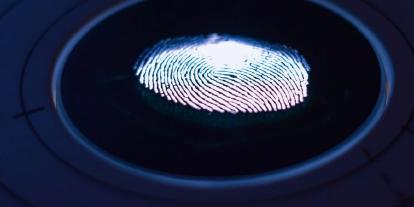An Essential Guide to Password Cracking: What You Need to Know
Password cracking is the process of guessing or using automated software to get the right combination of characters that make up a user’s password.
It’s a powerful tool in the arsenal of any cybercriminal, as it can be used to gain access to sensitive information and financial accounts.
Types of Password Cracking Techniques
Password cracking is performed using a variety of techniques, including dictionary attacks, brute force attacks, and rainbow table attacks:
- Dictionary attacks involve using a list of words, phrases, and common passwords to guess a user’s password.
- Brute force attacks involve trying every possible combination of characters until the correct combination is found.
- Rainbow table attacks involve using pre-computed tables of possible passwords to quickly find the correct one.
Another technique that password crackers use is social engineering. This involves using personal information about the user to try to guess the user’s password.
For example, if a user’s password is their pet’s name, the attacker could try to guess it by looking up the user’s profile on social media.
Password cracking can also be done using hardware-based attacks, such as keyloggers and hardware keyloggers.
A keylogger is a type of malicious software that records keystrokes and sends them to the attacker. Hardware keyloggers are physical devices that are connected between the keyboard and the computer to record keystrokes.
Finally, attackers can use password guessing to try to guess a user’s password. Password guessing involves trying common passwords, such as “123456” or “password”.
Understanding Password Cracking Algorithms
Password cracking algorithms are used quickly and effectively to crack passwords. The most commonly used algorithms are dictionary-based algorithms, which use a list of words, phrases, and common passwords to guess a user’s password.
Brute force algorithms are also used to crack passwords. These algorithms use every possible combination of characters to try to guess a user’s password. Rainbow table algorithms use pre-computed tables of possible passwords to quickly find the correct one.
Finally, password-cracking algorithms can also use machine learning and artificial intelligence to guess a user’s password. These algorithms use vast amounts of data to learn patterns in passwords and quickly find the correct one.
How to Protect Yourself?
The best way to protect yourself from password cracking is to make sure your passwords are strong and secure.
Use a combination of uppercase and lowercase letters, numbers, and special characters to make your passwords as secure as possible.
You should also make sure to use different passwords for each of your online accounts. Reusing passwords across multiple accounts makes it easier for attackers to gain access to your accounts.
Finally, you should use two-factor authentication whenever possible. Two-factor authentication adds an extra layer of security by requiring you to enter an additional code or answer a security question before you can access your account.
Understanding Password Cracking Laws
In some countries, password cracking is illegal. In the United States, for example, it’s illegal to crack passwords without the express permission of the account holder. In some countries, it’s also illegal to store passwords or store passwords in plain text.
It’s important to understand the laws in your country. If you’re found guilty of cracking passwords without the express permission of the account holder, you could face legal consequences.
Conclusion
Password cracking is a powerful tool in the arsenal of any cybercriminal, as it can be used to gain access to sensitive information and financial accounts.
In this guide, we’ve given you a comprehensive overview of what it is, the different types of password-cracking techniques, and how to protect yourself from it.
The best way to protect yourself from password cracking is to make sure your passwords are strong and secure. Additionally, use different passwords for each of your online accounts and use two-factor authentication whenever possible.
Finally, make sure to understand the laws in your country regarding password cracking, as you could face legal consequences if you’re found guilty without the express permission of the account holder.
By following the tips outlined in this guide, you can help protect yourself and keep your data and accounts secure.





